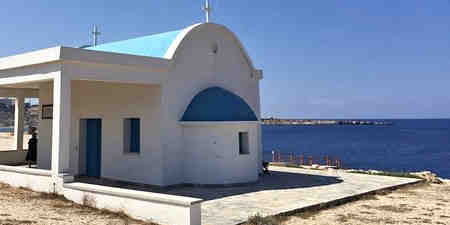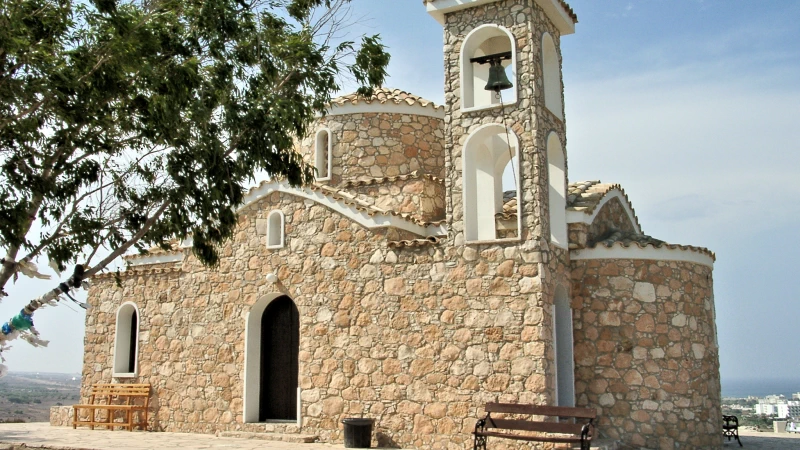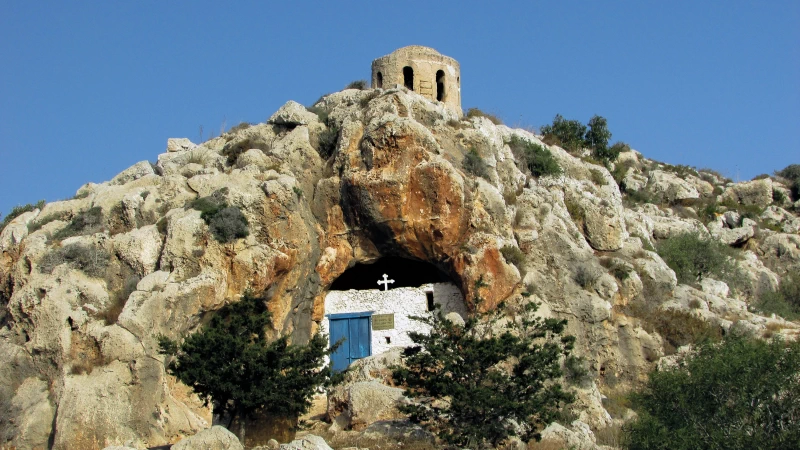Ayia Napa Monastery
A short drive from Protaras, Ayia Napa Medieval Monastery is a religious, architectural, and historical landmark, attracting hundreds of tourists as it counts among the most important monuments of its kind in Cyprus.
It is unclear when it was founded, however, it has a fascinating legend that tells of a hunter discovering an icon of the Most Holy Virgin Mary in a cave while chasing his prey in the forest. The hunter’s dog was distracted by a radiant light coming from the cave that revealed the image of the Mother of God. Later, the cave became the first church of the monastery.
At the heart of the courtyard of the monastery, there’s a gazebo with a beautiful legend. A Venetian girl from a wealthy family ran from home when her parents refused to marry her to a commoner she loved. The two-story building at the northern side of the courtyard was the home of the girl. The church here is Venetian too, dating from the 1500s when the nunnery was shaped around it. At the entrance of the monastery, by the gate, there’s a large sycamore tree said to be planted by the heroine of the story, who, unable to marry her beloved, became a nun and joined this very monastery. She is buried under the gazebo.
In its current form, the Ayia Napa Medieval Monastery dates from the Venetian era - 1489-1571, however, the gate was erected in the Middle Byzantine period (1191). The arched gallery is from the Ottoman era.
Ayia Napa Medieval Monastery no longer operates as a nunnery but hosts now a museum with a large collection of archaeological finds from the area, as well as icons and other religious artefacts, most of them from the private collection of Archbishop Makarios.
Read More
Read Less












